ISSN : 2287-9099
Vol.3 No.3
Abstract
This article proposes an interwoven three-part framework for conceptualizing and analyzing the role of information in human activities, melding the cognitive and affective domain of the individual, the collective domain of the social, and the domain of signification and communication practices, focusing on the ways in which individual characteristics, social context and interaction, and signification and representation work together to form information behavior. The article presents an overview of each of these three domains and discusses the ways in which they are intertwined. It argues that considering the three domains in relation to each other offers a holistic framework within which to consider the ways in which information – needs, behavior, creation, and use – depends simultaneously on all three. It concludes by offering a brief discussion of the implications of the framework for information services, including (but not limited to) libraries.
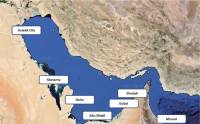
Abstract
Due to the oil business, settlements in the Gulf Region developed into prosperous cities. But in the near future, oil is off. The plans of the Gulf Cooperation Council (GCC) states bank on diversified and knowledge-intensive economies. Are those development plans realistic? What is the state of the art of knowledge institutions in the GCC countries? Applying the theoretical frameworks of Knowledge City and Science Indicators research, we empirically and theoretically studied the emerging Gulf cities Kuwait City (Kuwait), Manama (Bahrain), Doha (Qatar), Abu Dhabi, Dubai, Sharjah (all UAE), and Muscat (Oman). Our methodological framework includes grounded theory, ethnographic field study, ServQual-like quantitative questionnaires and semi-standardized qualitative interviews conducted on-site with informed people, informetrics, and, finally, the use of official statistics. In particular, we describe and analyze the cities’ knowledge infrastructures, their academics, and expenditure on R&D as input indicators; and publications as well as graduates as output indicators. A further crucial aspect of a knowledge society is the transition of graduates into knowledge-intensive public services and private companies.










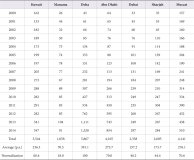




Abstract
The word ‘growth’ represents an increase in actual size, implying a change of state. In science and technology, growth may imply an increase in number of institutions, scientists, or publications, etc. The present study demonstrates the growth of neurology literature for the period 1961-2010. A total of 291,702 records were extracted from the Science Direct Database for fifty years. The Relative Growth Rate (RGR) and Doubling Time (Dt.) of neurology literature have been calculated, supplementing with different growth patterns to check whether neurology literature fits exponential, linear, or logistic models. The results of the study indicate that the growth of literature in neurology does not follow the linear, or logistic growth model. However, it follows closely the exponential growth model. The study concludes that there has been a consistent trend towards increased growth of literature in the field of neurology.


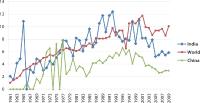
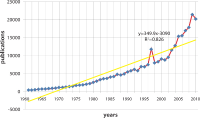
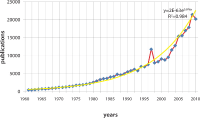
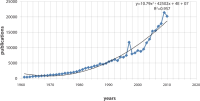








Abstract
Despite the number of developed theories, it still remains a difficult task for some established and emerging scholars in various academic fields to clearly articulate new theories from research studies. This paper reviews and collates the views of scholars on what a theory is and how a good theory can be developed. It explains the concept of a theory, and the different components that make up a theory. The paper discusses the different processes of theory development by emphasizing what theory is and what theory is not. This review found that scholars differ in their definition of a theory, which leads to using terms such as model, paradigm, framework, and theory interchangeably. It found the lack of theoretical constructs in a study to be one of the factors which explains why articles are rejected for publication. This paper may be of benefit to established researchers who may be struggling with theory development, and especially younger academics who are the future of scholarship in various academic fields, particularly in information science.

Abstract
Methods and Material: The PubMed database was used for retrieving data on ‘cancer biology.’ Articles were downloaded from the years 2000 to 2011. The articles were classified chronologically and transferred to a spreadsheet application for analysis of the data as per the objectives of the study. Statistical Method: To investigate the nature of growth of articles via exponential, linear, and logistics tests. Result: The year wise analysis of the growth of articles output shows that for the years 2000 to 2005 and later there is a sudden increase in output, during the years 2006 to 2007 and 2008 to 2011. The high productivity of articles during these years may be due to their significance in cancer biology literature, having received prominence in research. Conclusion: There is an obvious need for better compilations of statistics on numbers of publications in the years from 2000 to 2011 on various disciplines on a worldwide scale, for informed critical assessments of the amount of new knowledge contributed by these publications, and for enhancements and refinements of present Scientometric techniques (citation and publication counts), so that valid measures of knowledge growth may be obtained. Only then will Scientometrics be able to provide accurate, useful descriptions and predictions of knowledge growth.












